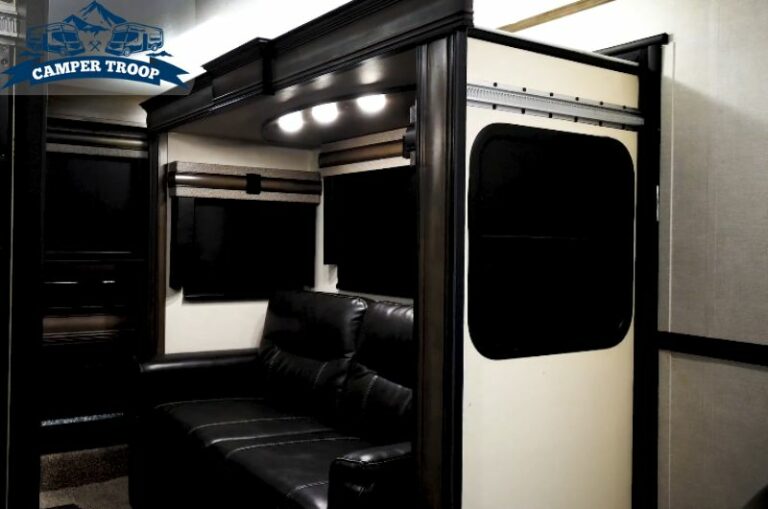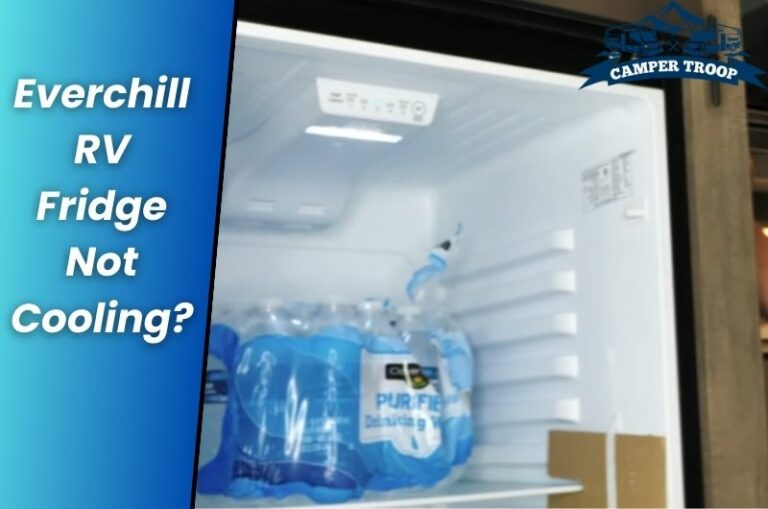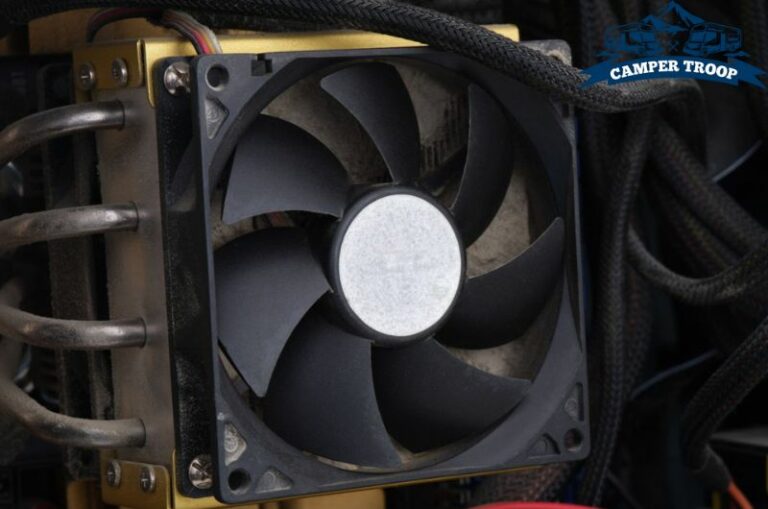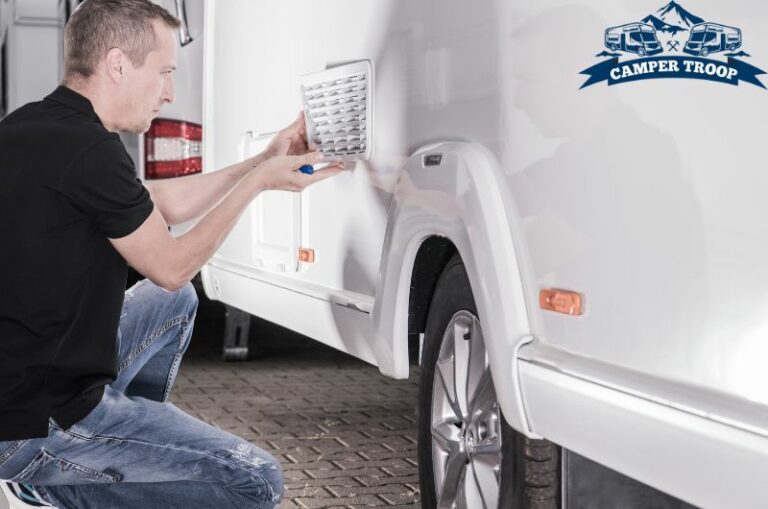RV Battery Disconnect Switch Problems: How to Fix Them!
A RV battery disconnect switch is an essential part of the RV for battery health and power conservation. This switch shuts off the entire electrical power system of the RV in one go. However, many users have complained about having problems with their RV battery disconnect switch.
RV battery disconnect switch problems include dead batteries, loose connections, corrosion, heat, and wire damage. Moreover, wrong switch installation, improper location, and damaged or broken switches are also some severe problems.
We’ve gathered all of the troubleshooting and fixes that the RV battery disconnect switch requires here for your convenience.
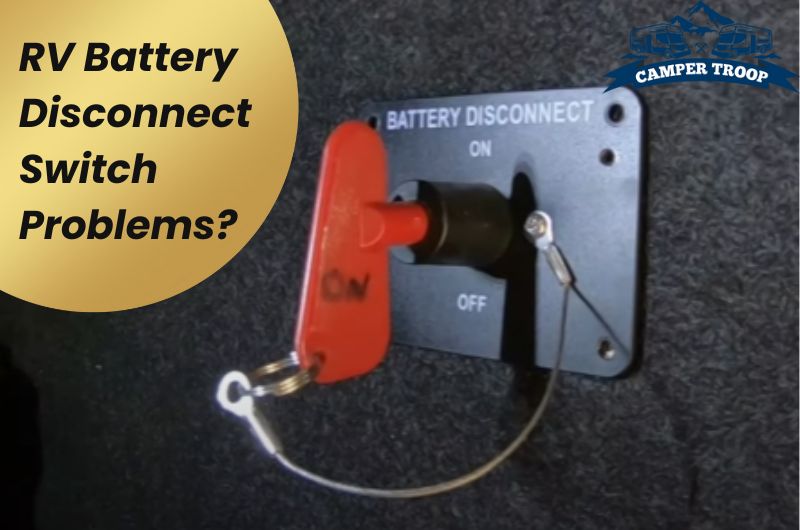
Troubleshooting and Fixing RV Battery Disconnect Switch Problems:
Diagnosing the source of RV battery disconnect switch problems should be your first course of action to fix this.
In order to pinpoint the exact problem with the switch, check the following components of the switch as we have instructed.
Dead RV Battery
For the RV battery disconnect switch to work properly, the RV battery needs to be completely functional.
The switch requires a steady power flow, which is absent from a dead RV battery. It is the most common problem in battery disconnect switches.
A dead battery doesn’t go into charging mode. The battery dies sooner due to the electrical appliances drawing in excessive power.
Because of a dead battery, the knob does not rotate fully in the standard position, and the battery switch doesn’t engage.
Use a multimeter to check for power flow between two battery posts. Put both ends of the multimeter on two sides of the disconnect switch posts and see if the current flow is continuous.
If the multimeter doesn’t detect any current, the battery is dead. So, you need to get a new one to replace it.
Read Also: Forest River Battery Disconnect Switch Location and Purpose
Loose and Faulty Connections
If the battery disconnect switch is not properly connected to the battery, of course it can’t cut off the power when it’s necessary. Any of the wires in the system could be damaged unintentionally.
The wires could come loose, or the insulation could be frayed or broken. Any of these situations can cause a short circuit in the switch system. As a result, the battery disconnect switch causes problems.
To deal with this problem-
- Check all the terminals on the entire system and make sure none of them are damaged or broken.
- Tighten each of the wires to their terminals securely and tightly.
- Ensure that the disconnect switch is properly connected to the RV battery and is not coming loose periodically.
Seek professional help if you’re still confused about the wires and their connectivity.
Read Also: Why Does My RV Have No Power From Battery? (Explained)
Improper Installation of the Battery Disconnect Switch
Incorrect installation of the battery disconnect switch leads to it sustaining a lot of damage. So, wrong installation is a major battery disconnect switch problem.
It will cause internal component damage over time and cause problematic power flow. Wrong installation further provokes high temperatures and broken wires in some places.
In order to properly install the switch–
- Follow the provided manual during the installation and get professional help.
- Make sure to attach the electrical cables of the switch to the metallic connectors.
- Use the right tools while tightening the components and connectors.
- Stabilize the installation with metal cords.
Rust and Corrosion of the Switch
Corrosion is one of the most common problems the RV battery disconnect switch faces.
Leaving the battery disconnected for longer periods of time leads to the current overloading the switch. So, the connectors end up breaking and losing stable connectivity.
The corrosion on the components makes the parts stick together as a result of chemical reactions. So, the switch doesn’t contact the components when it needs to.
Use appropriate commercial cleaners to clean off the accumulated rust. Don’t leave any corroded parts without attending to it. If any terminals are clogged up with debris, locate them and remove them soon.
Read Also: RV 12-volt System Not Working When Plugged In: How to Fix?
An Exposed Switch
Keeping the battery disconnect switch outside is certainly the wrong move. An exposed switch is easily affected by various environmental components.
Anyone from outside can disable it and tweak it as they want. It is not entirely safe to place a switch in such vulnerable settings.
Remove the switch from its external location and find a good place inside the RV to keep it.
Under a seat or behind the compartment door are some good places to install the switch. Use a long, insulated extension cord if necessary to place the switch.
Faulty Switch
If every other component has been checked and cleared, the possible problem could be the faulty switch itself. The switch can suffer internal damage, which breaks the wires built inside it.
In such circumstances, the switch can’t break the connection between the battery and electronics. Diagnosing a faulty switch can be a bit challenging as the damage can’t be seen from the outside.
You can use a scanner to figure out whether the switch really is damaged. The replacement is easy enough for you to complete yourself. To replace the switch-
- Remove the battery connectors from the switch.
- Get the solenoid out of the terminals.
- Now, replace the battery disconnect switch with a new compatible one.
- Reconnect the terminals and the connectors.
Read Also: Adding Second AC to 50 Amp RV: A Complete DIY Guide
Tips on Maintaining RV Battery Disconnect Switch
Keeping an eye out for some basic things should be enough to keep your RV battery switch healthy and functioning.
The switch shouldn’t give you too much trouble if it’s being maintained regularly.
Some things you can look out for while taking care of your RV battery disconnect switch are-
- Keep the RV battery switch off most of the time.
- Only turn the switch on when you plan not to use the RV for a long time.
- Avoid placing the battery disconnect switch outside the RV.
- Do a routine checkup of the wires and their connections.
- Look out for corrosion and clean it before it can build up.
- Monitor the water levels inside the RV battery to keep it healthy.
- Don’t let the battery voltage drop below 50%.
Read Also: RV AC Freeze Sensor Location [Complete Guide to a Freeze Sensor]
FAQs.
Here are some of the most frequently asked questions regarding the RV battery disconnect switch and its issues.
Should I Leave The RV Battery Disconnect Switch On or Off?
Most of the time, the RV battery disconnect switch should be turned to the off position. When you’re parking the RV for a long time, you can leave the switch on. Turn on the switch when you’re not going to use the RV for longer periods.
What Are The Benefits Of Using an RV Battery Disconnect Switch?
RV battery disconnect switch prevents unnecessary electrical connections by shutting off the power supply. It saves a ton of power and saves the battery from short circuiting. This switch also increases the battery’s lifespan and protects you from shocks during maintenance.
How Long Does an RV Battery Disconnect Switch Last?
Typically, an RV battery switch can last up to 4-5 years after installation. However, this lifespan can vary depending on maintenance, battery type, and charging style. Frequent use of the switch can reduce its lifespan by a long shot.
Conclusion
Since the RV battery disconnect switch is a safety feature, maintaining it should be a priority for an RV owner.
Without this switch, the battery will easily get overloaded, and the electronics will be susceptible to shock.
Letting the problems with the battery disconnect switch fester will only lead to bigger issues with the component.
Therefore, take action to fix the problems as soon as you notice the switch behaving out of the ordinary.
Read Also: RV Converter Fan Turns On & Off Frequently | Here’s the Fix!

Zayan is an accomplished author and a go-to expert for all things RV and camper-related. With a passion for adventure and a knack for problem-solving, he has spent years exploring the open road and fine-tuning his knowledge of recreational vehicles.
Zayan’s writing is a testament to his expertise, offering readers practical solutions to common RV dilemmas. Whether it’s troubleshooting mechanical issues, optimizing space, or planning the perfect road trip, Zayan’s insightful advice and engaging storytelling make him an invaluable resource for both seasoned travelers and newcomers to the world of RVing.


![4 Common Problems with Winnebago Fuse [Solutions Included]](https://campertroop.com/wp-content/uploads/2022/01/Winnebago-Fuse-Problems-768x509.jpg)
